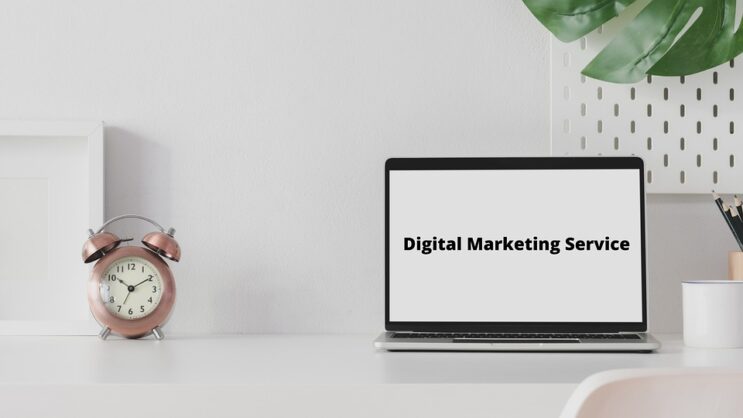In the vast and competitive world of digital marketing, there’s one question that never goes out of style: Which strategy delivers better ROI—SEO or SEM?
Whether you’re launching a brand-new website, running an e-commerce store, managing a digital marketing agency, or growing your affiliate income, understanding where your money yields the best return is not optional—it’s essential. In today’s economy, every marketing dollar must justify its existence.
Both Search Engine Optimization (SEO) and Search Engine Marketing (SEM) promise results. But which one actually drives sustainable, high-converting traffic? Which strategy offers long-term profitability? And most importantly, where should you invest to maximize ROI and boost revenue?
Let’s dive deep into this powerful debate and uncover which side of the coin delivers not just traffic—but profitable, trackable, and scalable returns.
Understanding SEO and SEM
Before jumping into which channel delivers better ROI, let’s quickly clarify what each strategy involves.
SEO is a long-term approach that focuses on optimizing your website organically to rank higher in search engines like Google, Bing, and Yahoo. It includes on-page optimization, link building, technical enhancements, and content marketing. The goal is to improve visibility in organic search results and drive free, high-quality traffic.
SEM, on the other hand, usually refers to paid search marketing—specifically PPC (Pay-Per-Click) campaigns like Google Ads. SEM gives you the ability to appear instantly on top of search engine results by bidding on specific keywords, with costs tied to impressions or clicks.
At first glance, SEM seems faster. SEO looks like a long game. But speed doesn’t always mean efficiency. Let’s dig deeper.
The ROI Equation: More Than Just Cost Per Click
Return on investment is more than just traffic. It’s about conversion rate, customer lifetime value, brand trust, lead quality, and long-term growth.
Let’s break down each method and its ROI potential in real-world terms.
SEO: The Silent Rainmaker
Investing in SEO is like planting a digital orchard. It takes time to grow, but once the roots are deep, the rewards come season after season—without paying for every click.
Once your pages rank on the first page of Google for high-commercial-intent keywords like “best CRM for small business” or “affiliate marketing tools that convert”, you generate evergreen traffic. There’s no recurring cost for every visitor.
More importantly, organic search users tend to trust your content more, stay longer, and convert better. Why? Because they clicked on your link by choice—not by seeing an ad.
Studies show that 70-80% of users ignore paid ads and go straight to organic results. If you’re targeting high-conversion, bottom-of-the-funnel keywords, SEO becomes your most profitable long-term asset.
SEO also empowers your business to build authority, reduce paid ad dependence, and rank for hundreds of keywords simultaneously. That’s value PPC can’t match.
But make no mistake—SEO is not free. It requires investment in high-quality content, technical site structure, backlink outreach, and ongoing optimization. However, the compounding ROI over time far outweighs the initial cost.
SEM: The Instant Traffic Machine
SEM, especially through Google Ads or Microsoft Advertising, is ideal for immediate visibility. Need to push a product? Launching a seasonal sale? Testing a new landing page? Paid ads give you the speed and control you need.
If you bid smartly on commercial-intent keywords like “buy wireless routers online” or “top SaaS email marketing platforms”, you can start generating revenue the same day your campaign goes live.
With detailed targeting, SEM also allows you to filter traffic by location, device, demographic, and even time of day. The precision is unmatched.
But SEM has a ceiling. Your traffic stops the moment your budget runs out. If your Cost Per Click (CPC) rises in a competitive niche—think insurance, legal services, or crypto trading—the ROI can drop fast unless you’re converting at a high rate.
Click fraud, ad fatigue, rising bids, and low ad relevance scores can also eat into your profits.
While SEM is highly trackable and scalable, it requires continuous monitoring, budget allocation, and campaign refinement. It’s not a “set it and forget it” solution. The moment you stop paying, the pipeline closes.
Long-Term ROI: SEO Outpaces SEM
When it comes to long-term ROI, SEO often outperforms SEM by 3x to 5x depending on your niche. Here’s why:
- Once you rank, you don’t pay for clicks.
- A single SEO-optimized blog post can drive traffic for years.
- SEO strengthens your domain authority, which helps all your pages rank better.
- Organic content builds brand trust, which improves conversion rates.
- You can leverage one piece of content across channels—social media, email marketing, and even PPC landing pages.
And while SEM provides fast results, it works best in synergy with SEO, not as a replacement.
Which Strategy is Best for You?
Now that we’ve unpacked the pros and cons of both strategies, it’s time to answer the million-dollar question:
Which strategy should you prioritize for better ROI?
The answer depends on your goals, timeline, and budget.
- If you’re a new website owner with limited organic authority and want traffic fast, start with SEM to gather data and validate offers. But start investing in SEO immediately, so you can eventually reduce ad spend.
- If you’re a digital marketer or affiliate, SEO is your goldmine. Your goal is to drive passive income, and organic traffic is the only way to make that happen at scale without constant investment.
- If you run an e-commerce or SaaS business, a hybrid strategy is ideal. Use SEM to scale product launches and promotions, while building long-term SEO assets to reduce CPA (cost per acquisition).
- For local businesses, SEO in the form of local SEO optimization (Google My Business, reviews, local backlinks) often beats ads for ROI. Users tend to trust local results more than paid listings.
Pro Tip: Combine SEO + SEM for Maximum ROI
SEO and SEM are not enemies—they’re teammates. The smartest brands use SEM for short-term wins and SEO for long-term growth.
You can even use SEM data to improve SEO. Look at top-performing PPC keywords, landing pages, and conversion rates. Then build SEO content around those terms to own both paid and organic results—doubling your visibility.
This multi-channel strategy not only improves ROI but also future-proofs your business from algorithm changes or ad platform disruptions.
Final Thoughts: ROI is a Marathon, Not a Sprint
In a world where clicks cost more every day and attention spans shrink, ROI becomes the holy grail of digital marketing. And while SEM delivers quick wins, it’s SEO that builds empires.
The most successful marketers and business owners don’t choose one over the other. They start with a balance, then shift more resources toward SEO as the ROI begins to stack up.
If you want to lower customer acquisition cost, build brand equity, and increase your profit margin over time—invest in SEO now.
The faster you start, the sooner the ROI arrives.
 CSP
CSP